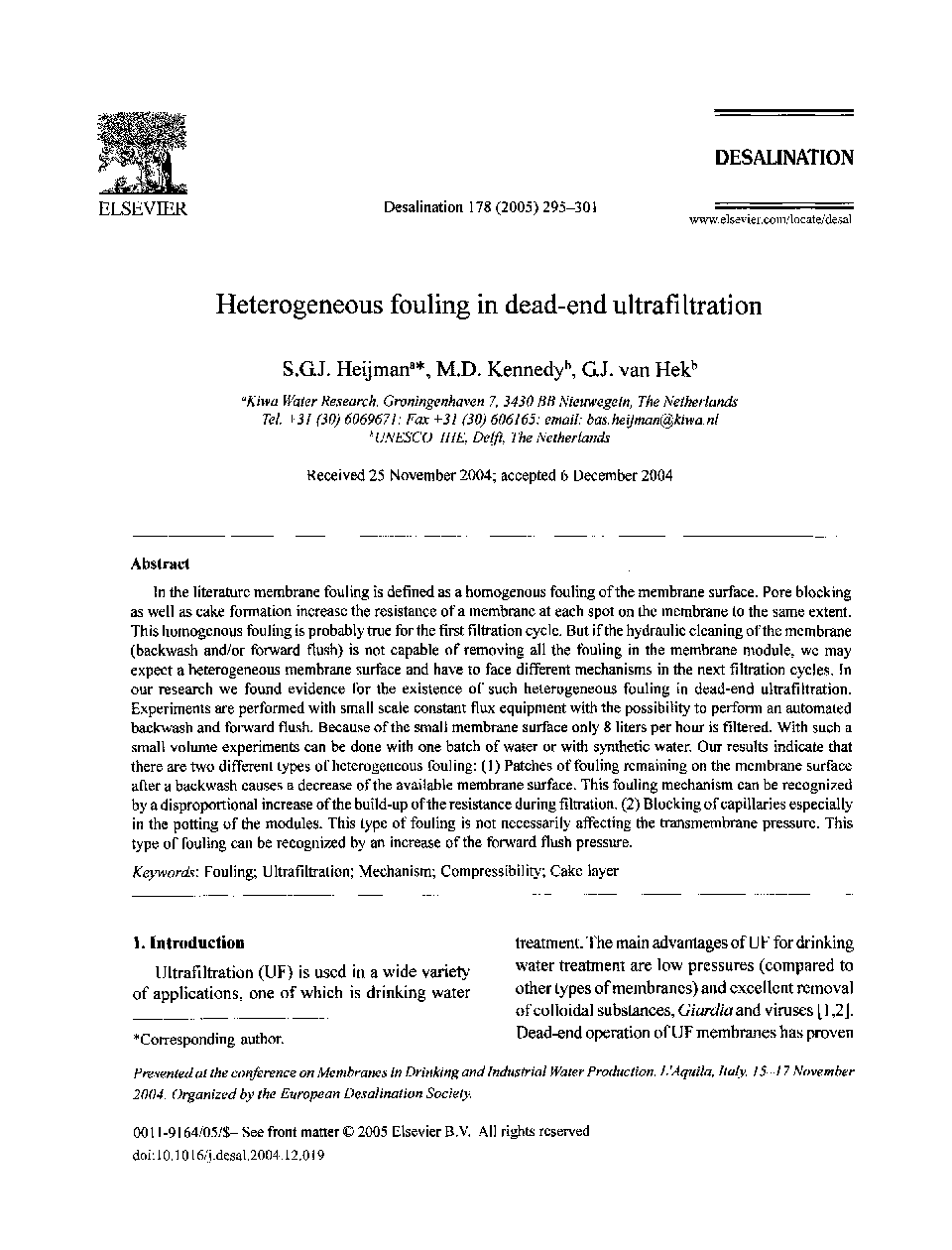| کد مقاله | کد نشریه | سال انتشار | مقاله انگلیسی | نسخه تمام متن |
|---|---|---|---|---|
| 9681155 | 1455512 | 2005 | 7 صفحه PDF | دانلود رایگان |
عنوان انگلیسی مقاله ISI
Heterogeneous fouling in dead-end ultrafiltration
دانلود مقاله + سفارش ترجمه
دانلود مقاله ISI انگلیسی
رایگان برای ایرانیان
کلمات کلیدی
موضوعات مرتبط
مهندسی و علوم پایه
مهندسی شیمی
تصفیه و جداسازی
پیش نمایش صفحه اول مقاله

چکیده انگلیسی
In the literature membrane fouling is defined as a homogenous fouling of the membrane surface. Pore blocking as well as cake formation increase the resistance of a membrane at each spot on the membrane to the same extent. This homogenous fouling is probably true for the first filtration cycle. But if the hydraulic cleaning of the membrane (backwash and/or forward flush) is not capable of removing all the fouling in the membrane module, we may expect a heterogeneous membrane surface and have to face different mechanisms in the next filtration cycles. In our research we found evidence for the existence of such heterogeneous fouling in dead-end ultrafiltration. Experiments are performed with small scale constant flux equipment with the possibility to perform an automated backwash and forward flush. Because of the small membrane surface only 8 liters per hour is filtered. With such a small volume experiments can be done with one batch of water or with synthetic water. Our results indicate that there are two different types of heterogeneous fouling: (1) Patches of fouling remaining on the membrane surface after a backwash causes a decrease of the available membrane surface. This fouling mechanism can be recognized by a disproportional increase of the build-up of the resistance during filtration. (2) Blocking of capillaries especially in the potting of the modules. This type of fouling is not necessarily affecting the transmembrane pressure. This type of fouling can be recognized by an increase of the forward flush pressure.
ناشر
Database: Elsevier - ScienceDirect (ساینس دایرکت)
Journal: Desalination - Volume 178, Issues 1â3, 10 July 2005, Pages 295-301
Journal: Desalination - Volume 178, Issues 1â3, 10 July 2005, Pages 295-301
نویسندگان
S.G.J. Heijman, M.D. Kennedy, G.J. van Hek,